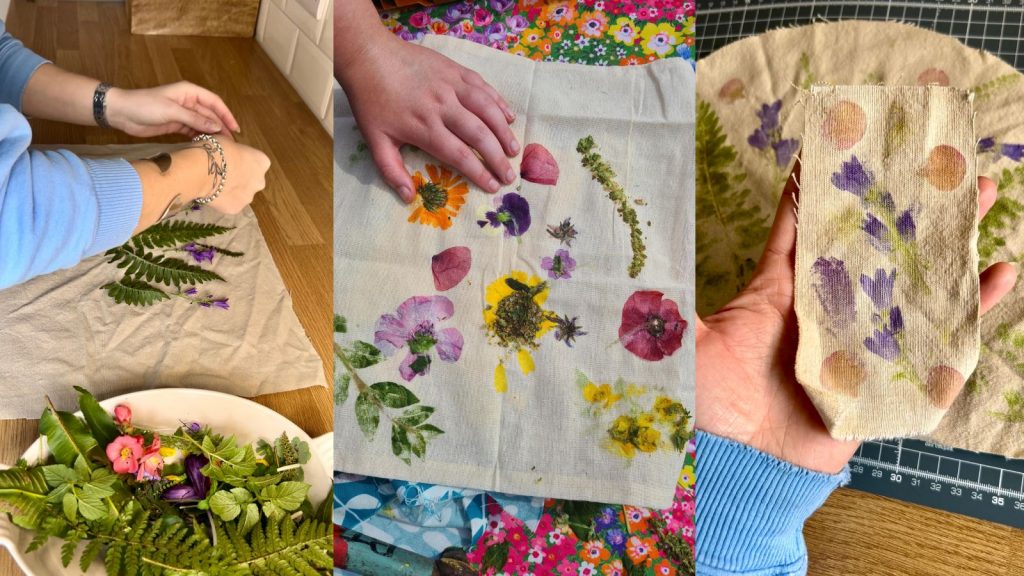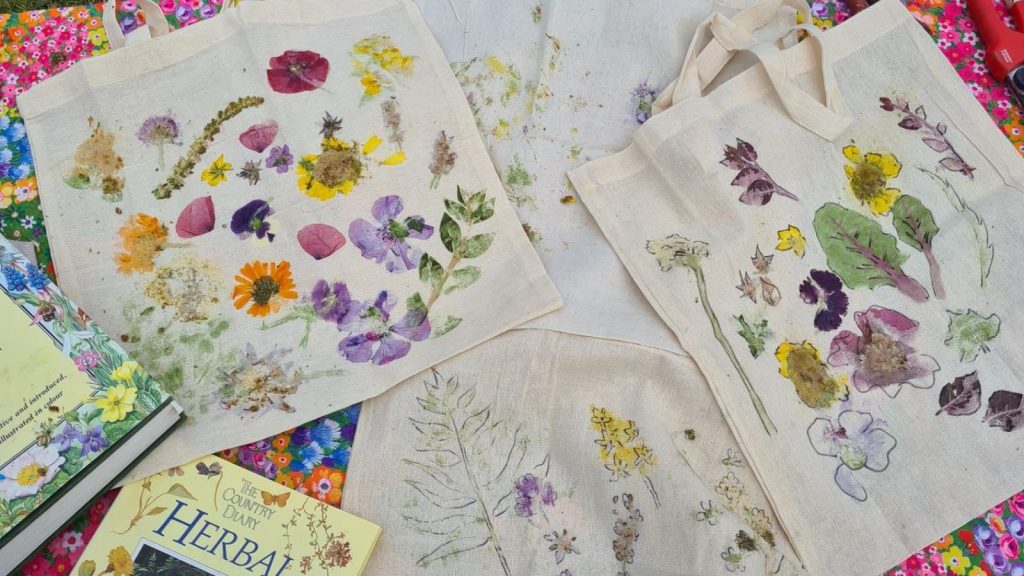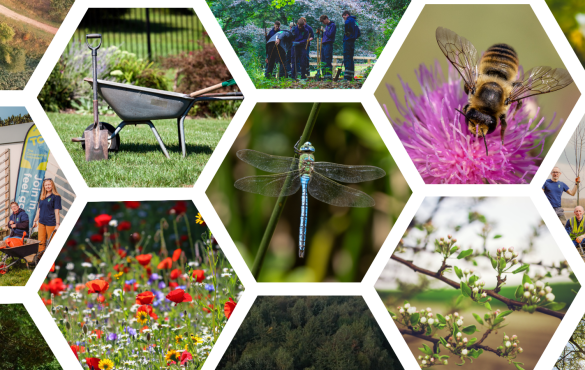Did you know that an estimated 250 million bunches of flowers are bought globally for Valentine’s Day, with 4 million of those being bought in the UK? On Mother’s Day, it’s estimated that 48% of UK adults purchase flowers for their mothers. Unfortunately many of these bouquets are cultivated using artificial lighting in energy-intensive Dutch greenhouses and shipped over to the UK, others are transported from Kenya, Colombia and Israel. Many of these will end up in the bin after just a few days, with some carted off to landfill rather than composted.
“The British-grown cut flower industry is worth more than £120m a year, but this makes up just 14% of all the cut flowers bought in the UK – down from around 45% 30 years ago.”
Source: Which?
Now we have all heard about drying flowers, but what if you could preserve the vibrant colours of your gifted flowers on fabric? To be used to decorate clothes, cards, napkins, or tablecloths for many years to come. This is where Hapa Zome comes in! Read on for step-by-step instructions, a video tutorial and a printable PDF…
What is Hapa Zome?
Hapa Zome is a form of eco-printing or natural dyeing that involves transferring coloured pigments from plant materials onto fabric or paper by pounding with a hammer. The process creates vibrant imprints, capturing the colours and shapes of the plants used. Hapa Zome is a celebration of nature’s beauty and a creative way to connect with the environment through art. The process allows for experimentation with various plant materials and encourages an appreciation for the wide range of colours and textures found in the natural world, which makes it a fantastic craft activity for children too.

Origins of Hapa Zome
Hapa Zome has its roots in Japan, where ‘hapa’ means leaf and ‘zome’ means to dye. The technique traditionally involves using natural materials like leaves and flowers to create colourful prints on fabric. Over time, this technique has gained recognition beyond Japan, with individuals around the world adopting and adapting Hapa Zome as a creative and eco-friendly way to engage with nature through art.
How to Pronounce Hapa Zome
Hapa Zome is pronounced as ‘hah-pah zoh-may’.

Hapa Zome Meaning
The term ‘Hapa Zome’ can be translated to mean ‘leaf dyeing’. It reflects the essence of the process, where the pigments from leaves and other plant materials are transferred onto a surface. In traditional Japanese arts and crafts, there is a concept known as ‘wabi-sabi’, which celebrates the impermanence and imperfection found in nature. Hapa Zome, with its focus on using leaves and flowers to create prints, aligns with the ethos of wabi-sabi by capturing the transient beauty of plant materials on fabric or paper.
Tools Needed for Hapa Zome
The tools required for Hapa Zome are minimal and include a hammer, fabric or paper, plant materials (leaves, flowers, ferns), and a hard, flat surface.
Hapa Zome Step-by-Step Instructions
- Select materials: choose fresh leaves/ferns and flowers with vibrant colours.
- Prepare surface: lay the fabric or paper on a hard, flat surface.
- Arrange plant materials: place the chosen leaves and flowers on the fabric (bonus points for using natural fabric like linen or cotton) in your desired arrangement or pattern. Get creative!
- Cover with fabric: optionally, cover the plant materials with another layer of fabric to protect the hammer and achieve a more even print.
- Pound with hammer: gently pound the plant materials with a hammer, transferring their pigments onto the fabric or paper.
- Remove materials: carefully peel off the plant materials to reveal the colourful prints.
How to Make Hapa Zome Permanent
Making Hapa Zome permanent involves fixing the colours on the fabric or paper. You can achieve this by ironing the material with a pressing cloth on top, and setting the iron to a medium heat. This heat-setting process helps to make the prints more durable and resistant to fading with washes. Additionally, some artists may use natural mordants or fixatives to enhance colourfastness.
- Complete the Hapa Zome process: follow the Hapa Zome process, including arranging plant materials on the fabric or paper and pounding them with a hammer to transfer pigments.
- Allow the prints to dry: after creating the prints, allow the fabric or paper to dry completely. This ensures that the plant pigments have a chance to adhere to the surface.
- Iron the prints: once the prints are dry, place a clean cloth or parchment paper over them to protect the iron. Iron the fabric or paper on a medium heat setting. The heat helps set the colours and makes them more resistant to washing.
- Heat-setting alternative: instead of ironing, you can place the Hapa Zome prints in a clothes dryer on a low heat setting for about 20-30 minutes. Again, the heat helps set the colours.
- Wash with care: to ensure longevity, hand wash the fabric or paper in cold water with a mild detergent. Avoid using bleach or harsh chemicals, as they can fade the colours.
- Additional fixatives (optional): some artists may choose to use natural fixatives or mordants to enhance colourfastness. Substances like alum or vinegar can be applied to the fabric before or after the Hapa Zome process.
By following these steps, you can make your Hapa Zome prints more permanent and allow it to better withstand the effects of washing and exposure to light. Keep in mind that while these methods help with longevity, natural dyes may still undergo some fading over time, adding a patina to your unique artwork!
Hapa Zome Printable PDF
Looking for a fun and creative activity to do with your children? Download our free Hapa Zome instructions printable PDF. This easy-to-follow 1-page guide will equip you with everything you need to transform leaves and flowers into stunning fabric prints, perfect for personalising tote bags, napkins, or even creating unique greeting cards or party invites. Let the creativity bloom as you and your little ones connect with nature and create something wonderful!
Lastly, be sure to compost any leftover blooms and leaves to avoid this biodegradable material going to landfill!
__________________________________________
Keep up to date with the latest news and activities from The Conservation Volunteers by following us on Twitter, Facebook, LinkedIn and Instagram. You can also sign up to receive TCV’s Greenzine newsletter for more ways to get involved.





